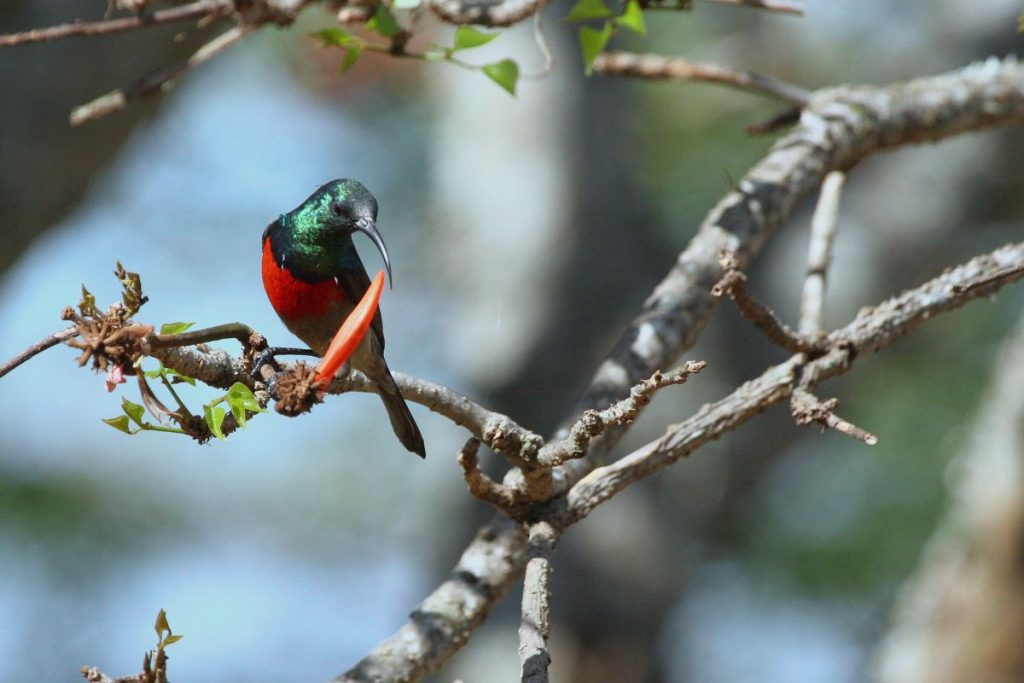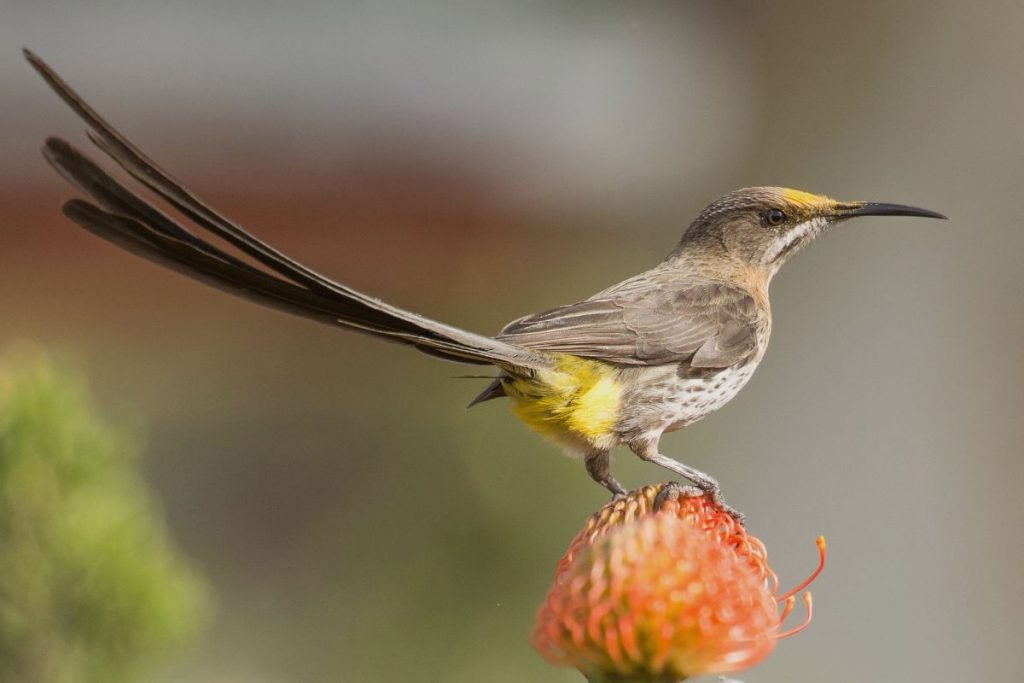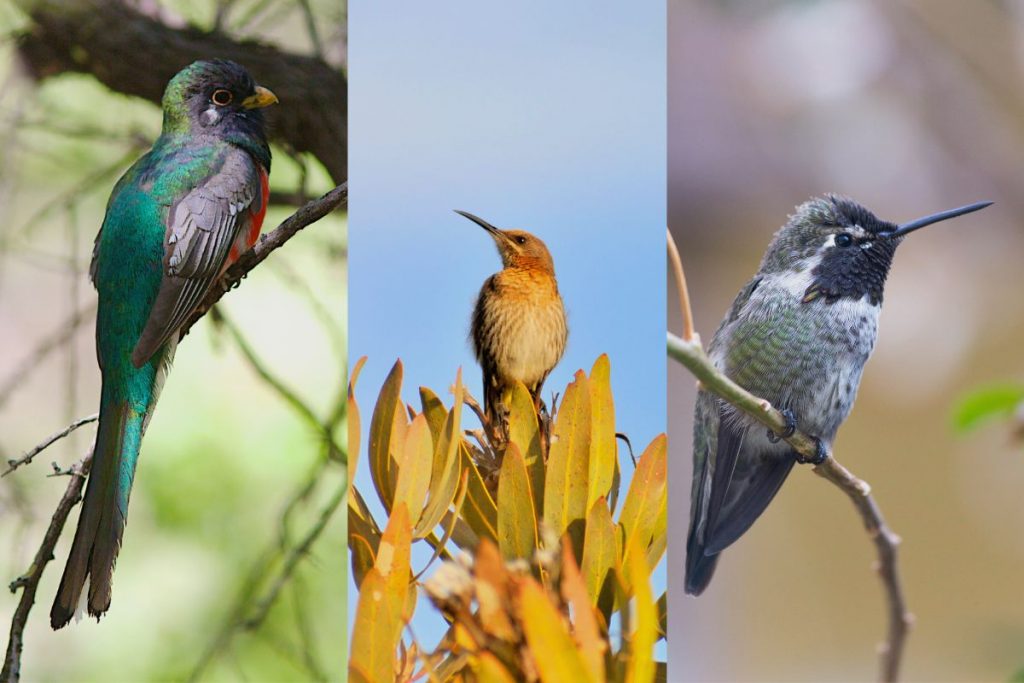Are there hummingbirds in South Africa? The short answer is no; there are no Hummingbirds in South Africa. Hummingbirds are native to the Americas, with their range spanning from Alaska to Tierra del Fuego. However, South Africa is home to its own fascinating species of nectar-feeding birds that display similarities to the hummingbirds of the Americas.
In this blog post, we will delve into the captivating world of South Africa’s nectar-loving avian wonders and learn about their roles in the ecosystem.

Sunbirds: South Africa’s Vibrant Nectar-feeders
While hummingbirds are not native to South Africa, the country is home to several species of sunbirds, which are often mistaken for hummingbirds due to their brightly coloured plumage and nectar-feeding habits. These small, iridescent birds can be found throughout Africa and parts of Asia, with a number of species residing in South Africa.
Adaptations for Nectar-feeding
Sunbirds are well-adapted to their nectar-rich diets, possessing long, slender bills and brush-tipped tongues that enable them to extract nectar from flowers with ease. Their feeding habits are strikingly similar to those of hummingbirds, as they both visit a wide variety of flowers, hovering or perching briefly while they feed.
Roles in the Ecosystem
Sunbirds play a crucial role in South African ecosystems as pollinators. As they move from flower to flower, they inadvertently transfer pollen, thus assisting in the fertilisation and reproduction of many plant species. This mutualistic relationship between sunbirds and plants ensures the survival and genetic diversity of the plants they visit, as well as providing a continuous food source for the sunbirds themselves.

Sugarbirds: The Graceful Fliers of South Africa’s Fynbos
Another group of nectar-feeding birds native to South Africa is the sugarbirds. These medium-sized birds, found predominantly in the fynbos and grassland regions of the country, are characterised by their long, slender tails and curved bills, perfect for probing the tubular flowers of their preferred habitats.
Feeding and Flight
Sugarbirds, like sunbirds, feed on the nectar of various flowering plants. Though they lack the impressive hovering abilities of hummingbirds, sugarbirds are skilled flyers, able to manoeuvre gracefully between flowers in search of nectar.
Ecological Importance
Similar to sunbirds, sugarbirds serve as important pollinators in South African ecosystems. Their foraging activities contribute to the reproductive success and genetic diversity of the plants they visit. In turn, these plants have evolved traits, such as brightly coloured and fragrant flowers, to attract and reward their avian pollinators with sweet nectar.
Conservation and Appreciation of South Africa’s Nectar-feeding Birds
The conservation of sunbirds and sugarbirds is essential for maintaining the balance of South African ecosystems and preserving the country’s incredible biodiversity. Habitat loss, climate change, and the spread of invasive plant species pose significant threats to these birds and the ecosystems they inhabit.
Citizen science initiatives, such as birdwatching clubs and monitoring programmes, can play a vital role in supporting the conservation of these birds by raising awareness, collecting valuable data, and fostering a sense of stewardship among local communities. Additionally, national and international conservation organisations are working to implement targeted conservation strategies to ensure the long-term survival of these avian treasures.
Final Thoughts: Embracing the Wonders of South Africa’s Skies
Although hummingbirds are not native to South Africa, the country boasts a diverse and captivating array of nectar-feeding birds that fill similar ecological roles. The vibrant sunbirds and graceful sugarbirds of South Africa provide a fascinating glimpse into the intricate relationships between flora and fauna, illustrating the importance of pollinators in maintaining the balance and health of ecosystems.
As we come to appreciate the unique beauty and ecological significance of South Africa’s nectar-feeding birds, let us also recognise our responsibility to protect and preserve these vibrant creatures and their habitats. By supporting conservation efforts and fostering a deeper understanding of their roles in the environment, we can ensure that future generations will have the opportunity to marvel at these avian wonders.
Moreover, the presence of these enchanting nectar-feeding birds in South Africa serves as a reminder that nature has a wealth of surprises and delights waiting for us to discover. While we may not find hummingbirds gracing the skies of South Africa, we are reminded that every corner of our planet holds its own unique and captivating natural treasures.
So, the next time you find yourself exploring the natural beauty of South Africa or simply enjoying your own backyard, keep an eye out for the shimmering colours and agile flight of sunbirds and sugarbirds. Let their presence serve as a reminder of the wondrous diversity of life that exists on our planet and inspire you to continue seeking out and appreciating the many marvels that Mother Nature has to offer.
Image Gallery – Are There Hummingbirds In South Africa?



Related Posts:
References:
- About Hummingbird (Wikipedia).
- About South Africa (Wikipedia)
- Greenewalt, C. H. (1960). Hummingbirds. New York: Doubleday. Google Scholar.
